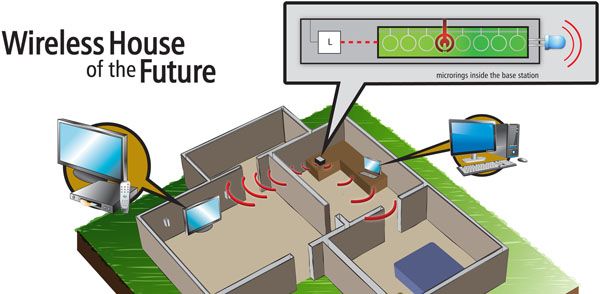
A new technology that converts laser pulses into radio signals could eliminate the clutter of wires in homes by letting devices communicate wirelessly, and at speeds much faster than current Wi-Fi.
Minghao Qi, an assistant professor of electrical and computer engineering at Purdue University in Indiana says his team's “micro-ring resonators” will handle everything from high-definition television broadcasts to secure computer connections and allow data to transmitted throughout the house from a single hub. And the best part: no cables to hide.
The silicon micro-ring resonators take information-laden laser pulses and convert them into pulses of radio-frequency signals. The pulses help alleviate problems caused when Wi-fi signals bounce off walls and ceilings, which can cause signal interference.
"Sending it in pulses means the reflected signals will not be overlapping with the primary signal," Qi told TechNewsDaily.
The other advantage of micro-rings is speed. The new system Purdue is developing allows signals to be sent in the 60 gigahertz bandwidth, which translates into faster data transmission.
"What enables this technology is that our devices generate ultrabroad bandwidth radio frequencies needed to transmit the high data rates required for high resolution displays," said study team member Andrew Weiner, a Professor of Electrical and Computer Engineering at Purdue.
Currently, Wi-fi can transfer data anywhere from about 50 to 100 megabits per second. But micro-ring technology could transmit at 5 to 6 gigabits per second – fast enough to transmit the entire contents of a Blu-ray disc in about 5 seconds. For reference, one gigabit is equal 1,000 megabits.
Sign up for the Live Science daily newsletter now
Get the world’s most fascinating discoveries delivered straight to your inbox.
For now, Purdue is focusing on marketing a micro-ring resonator device that only transmits one way. That means it cannot currently be used for connecting to the Internet, which requires two-way communication.
"The sending unit for transmitting data is currently still a little bulky,” Qi said. “Later, if the sending unit can be integrated into the devices, we could enjoy full two-way traffic, enabling the wireless operation of things like hard-disc drives and computers.”











